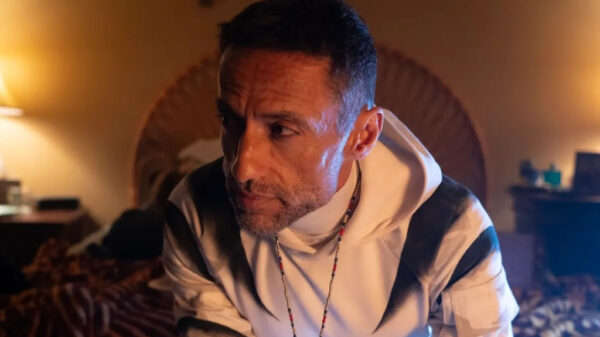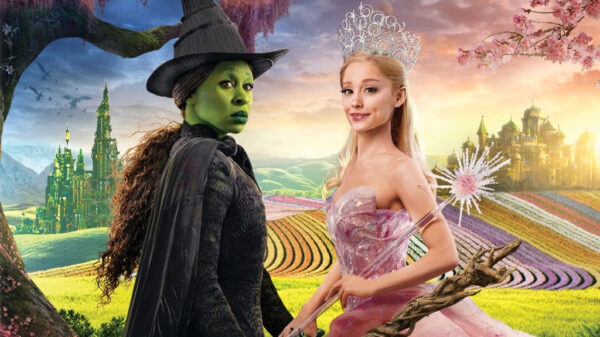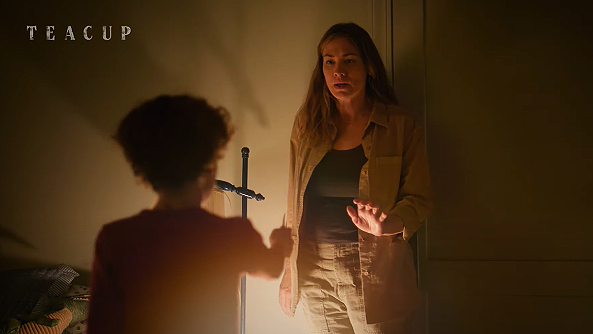SYFY’s latest original series, Astrid & Lilly Saves the World (Astrid & Lilly), has recently wrapped up its freshman season, and it goes without saying that the show has rightfully earned a place among supernatural show sensations like Buffy the Vampire Slayer, Stranger Things, and The Chilling Adventures of Sabrina. The dramedy follows the harrowing journey of best friends Astrid Bell (Jana Morrison) and Lilly Fortenberry (Samantha Aucoin) as they battle the throes of high school horrors while simultaneously saving the planet from total devastation.
After being outcasted and bullied by their peers, the titular characters unintentionally perform a ritual in the heat of hurt and fury that opens an inter-dimensional portal and sets off a deadly invasion of monsters in their suburban hometown of Coppers Cove, Ohio. Lucky for the duo, opening Earth’s portal also comes with perks that include a set of quirky superpowers and their very own “Giles” by the name of Bruno (Olivier Renaud) – a portal protectorate with a soft spot for true love and an obsession for 90s pop-culture.
Creators-showrunners Noelle Stehman and Betsy Van Stone, along with their production team comprised of women, queer folx and non-binary individuals (Directors Jordan Canning, Jill Carter, Audrey Cummings, Danishka Esterhazy, and J Stevens; and Writers Alix Markman, Alexandra Mircheff, and Veronika Paz), have produced a coming-of-age tale that distinguishes itself from a long history of supernatural television series featuring teenage superheroes who fight off otherworldly beings. For starters, Astrid & Lilly is written with a female gaze and comes readily equipped with witty dialogue, dark humor, and campy gore. Even better, the show provides a foundation built on impactful commentary regarding anti-bullying, body-positivity, sex-positivity, queer sexuality, and the power of female friendships. Each episode of Season 1 brings a unique monster inspired by and spawned from the trials and tribulations of the high school experience, thus catalyzing self-discovery, self-acceptance, and greater self-worth for the story’s protagonists and other main characters. Lead and recurring characters, alike, were developed with care and thoughtful consideration, giving their audience dynamic people to relate to and connect with, no matter the viewer’s age, and paving the way for Astrid & Lilly’s important messages to hit home.
Astrid & Lilly’s list of commendable elements doesn’t end there. The show also sets a high bar in terms of diversity, providing representation of API (i.e., the Filipino community), black, and queer communities across cast members and primary characters. The YA drama most notably features a queer protagonist, Lilly, and her relationship with frienemy-turned-girlfriend, Candace Powell (Julia Doyle), a canon W|W-ship that fans endearingly refer to as “FortWell”. Positive visibility of queer teenagers on mainstream television is especially pertinent as we witness a rise in anti-LGBTQIA+ bills that target youth being introduced to legislature and signed into law in states across the U.S.
Perhaps the show’s greatest achievement is that Astrid & Lilly unfolds as an empowering love letter to plus-size individuals – a marginalized community that’s vastly underrepresented in media and systemically excluded from positions of leadership and heroism in stories. We, as a society, have a fixed image of who can be a superhero conceived as far back as the first recorded hero’s tale, the Epic of Gilgamesh, some 4,000 years ago. Along with a set of standard characteristics – valor, honor, strength, etc. – a superhero is portrayed with a very specific body-type: impossibly fit with abs that you can wash your clothes on and biceps that can pop a melon with a single flex of the arm. Superheroes of any gender can be illustrated with these physical traits, but woman are most often portrayed as thin and petite. Astrid & Lilly challenges this societal norm by placing the hero’s cape on two young ladies who, as Astrid describes, “have a few extra luscious curves”, and thereby encourages viewers to reshape their image of a superhero and, ultimately, their own body image. The result is that Astrid & Lilly gives us all permission to see ourselves in the cape of the hero no matter our body-type, and frankly, it’s about damn time someone has flipped this 4,000-year-old script!
Hey there, Monster Hunters! If you adore Astrid & Lilly Save the World and want to help our favorite baddies slay a second season, let SYFY know! Head over to Instagram and show your love for Astrid, Lilly, and the rest of the gang on handles @astridlillyshow and @SYFY.
Stream Season 1 of Astrid & Lilly Save the World on SYFY.com or on the SYFY app.
Dani grew up on the West Coast in sunny California. With a passion for film and television, she’s always on the hunt for binge-worthy flicks with diversity and positive representation of Womxn, the LGBTQIAN+ community, and other marginalized groups. Favorite genres include supernatural dramas, sci-fi, fantasy, horror and magical realism. Dani’s current favorite shows are Motherland: Fort Salem, Killing Eve, Dickinson, and Euphoria.




















